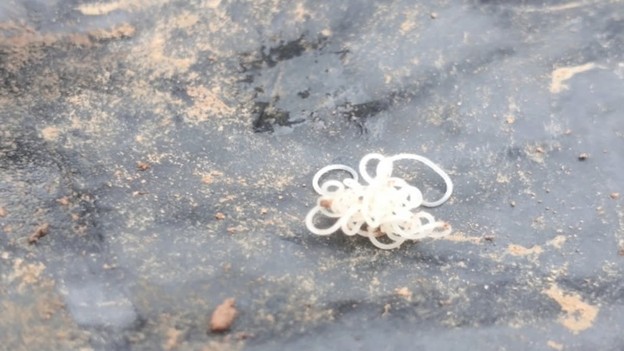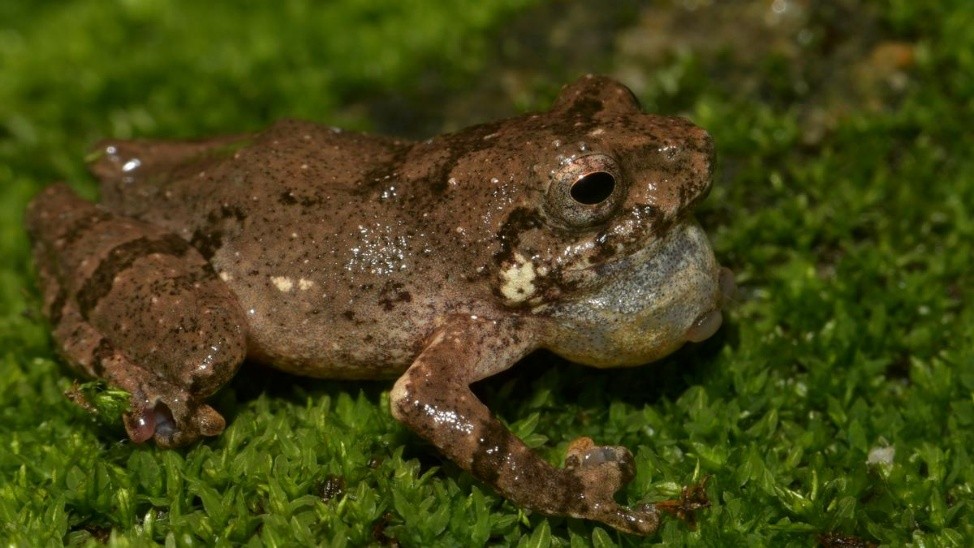Description
Disclaimer: Copyright infringement not intended.
Context:
Scientists in Brazil discovered an ultrablack velvet ant species, Trauma mutilla bifurca, with light-absorbing pigmentation. This rare feature unique among Hymenoptera raises questions about its evolutionary purpose and defense mechanisms, sparking scientific curiosity.
About the Brazilian Velvet Ant
- Velvet ants are a group of parasitic wasps well known for a suite of defensive adaptations including bright coloration and a formidable sting.
- Appearance: They are wasps, some of which are wingless and are named in part for their exterior. The velvet ant is known for its distinctive black and white markings.
- Habitat: Found in the bush desert in Brazil called Caatinga.
Characteristics
- Taxonomy: Velvet ants are not "ants", they are a species of wasp in the family Mutillidae.
-
- The velvet beetle belongs to the Hymenoptera order, including bees and other wasps.
- Some species, such as Traumatomutilla bifurca (Brazilian velvet ant), show distinct black and white markings that make them visually striking in tropical savannas and dry scrub deserts.
- Ultrablack Trait: Female velvet ants exhibit an ultra-black color first observed in Traumatomutilla bifurca that absorbs almost all visible light.
-
- The unique color comes from special microstructures in the exoskeleton that capture light. Ultra-black pigmentation helps with camouflage, temperature regulation, and mates
- Males vs. Females: Only female velvet ants show ultra-black coloration, while males have similar black markings but reflect more light.
- Role in the ecosystem: Serves as a pollinator and contributes to maintaining the ecological balance.
- Evolutionary Significance: The ultra-black trait highlights convergent evolution, where unrelated species develop similar traits.
-
- This adaptation is also seen in rays and deep-sea fish, which helps in camouflage and survival.
- Potential scientific applications: The ultra-black property reveals insight into nanostructures and inspires advances in stealth technology and solar panel efficiency.
Why is this finding unique?
- Ultra-black pigmentation is rare in the animal kingdom.
- Organisms that have it help them hide from predators, regulate body temperature, or even attract mates, as the contrast against brighter colors can be visually appealing.
Source:
INDIAN EXPRESS

|
PRACTICE QUESTION
Q.Consider the following statements regarding the Brazilian Velvet Ant:
- Velvet ants belong to the family Mutillidae and are a species of wasp.
- Only male velvet ants exhibit ultra-black pigmentation that absorbs almost all visible light.
- The ultra-black trait of the velvet ant has potential applications in fields such as stealth technology and solar panel efficiency.
Which of the statements given above is/are correct?
A) 1 and 2 only
B) 2 and 3 only
C) 1 and 3 only
D) 1, 2, and 3
Answer: c
Explanation:
Statement 1 is correct: Velvet ants belong to the family Mutillidae and are a species of wasp, not true ants.
Statement 2 is incorrect: Only female velvet ants exhibit ultra-black pigmentation, not the males.
Statement 3 is correct. The ultra-black trait of the velvet ant has potential applications in fields such as stealth technology and solar panel efficiency, as it is based on unique nanostructures.
|















